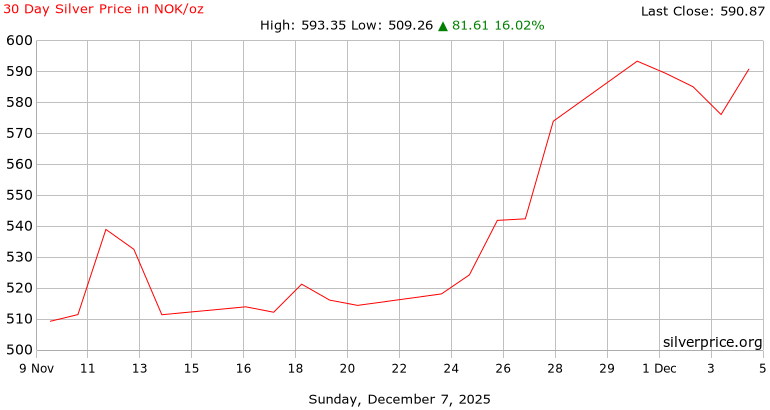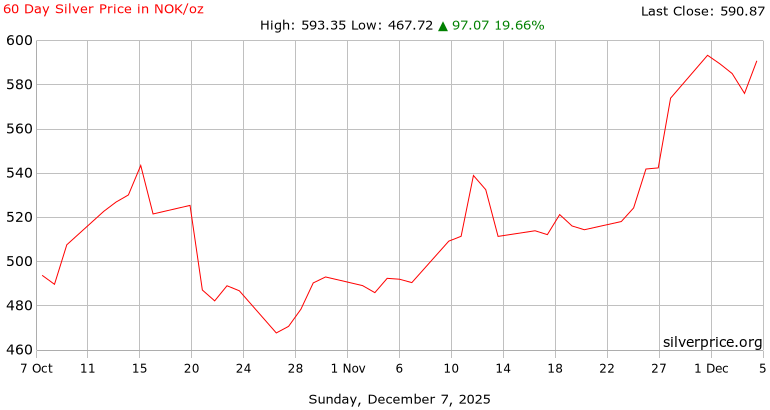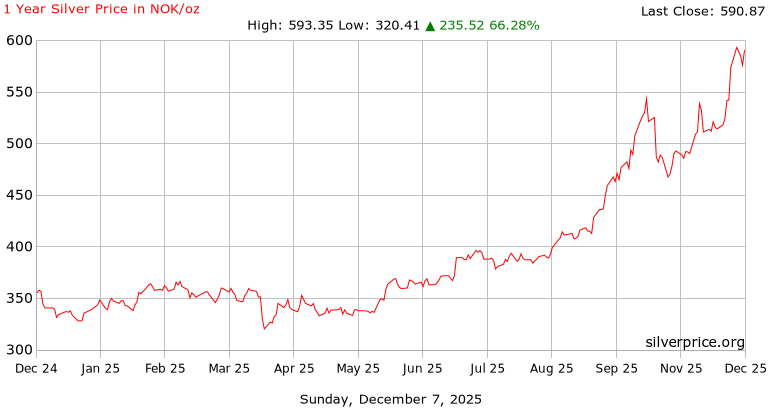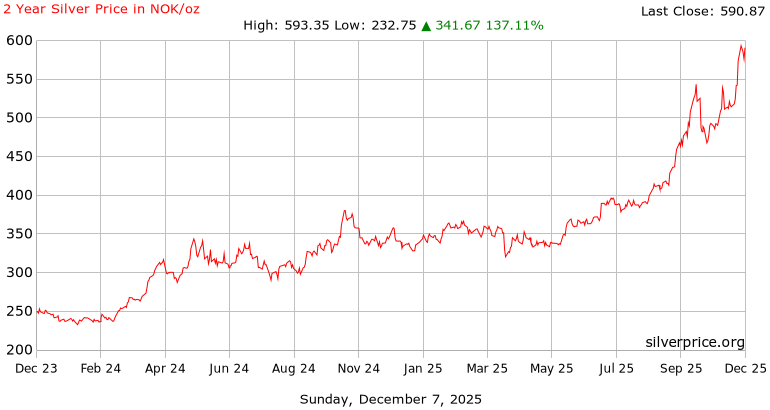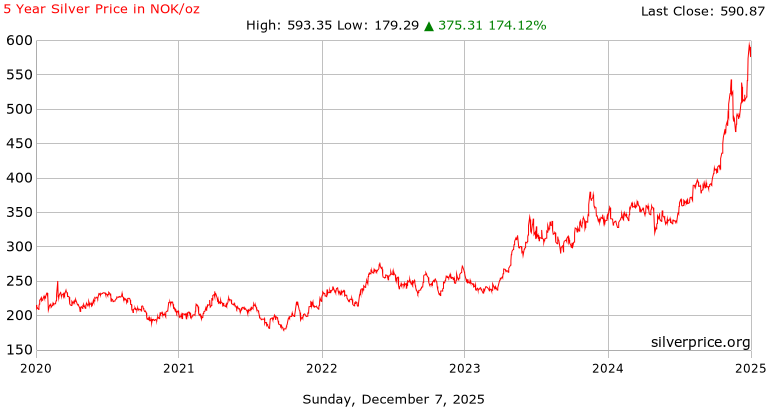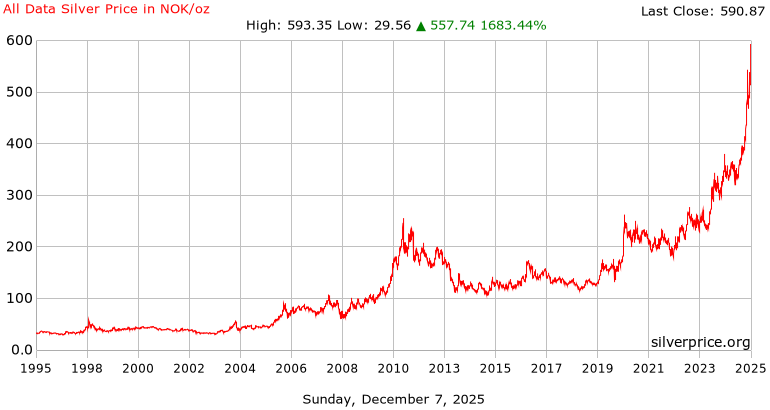Silver Price Norway
(Norwegian Krone)
Conversion : 1 troy ounce = 31.1034768 grams
Norwegian Krone 24 Hour Spot Silver Price
Norwegian Krone Silver Price History Charts
Silver Price Norway
Norway is a Scandinavian country known officially as the Kingdom of Norway. The capital of Norway is the city of Oslo, and the nation’s government is a unitary parliamentary constitutional monarchy. The nation covers a land area of almost 150,000 square miles, and has a population of approximately 5.2 million. Norway features and expansive coastline, and borders Russia, Sweden and Finland.
The official currency of the Kingdom of Norway is the Norwegian Krone. The krone is good, legal tender both for the mainland of the kingdom as well as its dependent territories. The term krone means crown in English. Although the krone is subdividable into 100 smaller units of currency, those smaller units have existed only electronically since 2012.
The Norwegian Krone was introduced to replace the Norwegian Speciedaler in 1875. Once the Norwegian Krone was in place, Norway joined the Scandinavian Monetary Authority which had been established just two years earlier in 1873. The union was only in place a few decades, however, and ceased to exist in 1914. Once the union was disbanded, Norway, Sweden and Finland all elected to keep the names of their individual and separate currencies. During its time as part of the monetary union, the krone operated on a gold standard. The gold standard was ceased and reinstated on multiple occasions, until it was removed for good in 1931.
The Norwegian Krone is issued and controlled by the country’s central bank, the Norges Bank. In addition to maintaining the nation’s currency, the central bank also has numerous other responsibilities including maintenance of monetary and price stability. The Norges Bank also manages the Government Pension Fund of Norway, one of the largest sovereign wealth funds in the world. The central bank was established in 1816 and is headquartered in the capital city of Oslo.
The silver mines of Kongsberg are the largest mining field in Norway, with over 80 different mines. The mines once employed over 4000 workers during the peak years reached in the 1770s. During the mine’s 335 year history, it was a substantial contributor to GDP for the Danish-Norwegian Union. Today, the town features the Norwegian Mining Museum. The museum has numerous artifacts from the area including silver, tools and machinery.
The area’s King’s Mine is the largest, and thousands of tourists visit it each year. The mine has been preserved since it was closed in 1958. Interestingly, what is now known as the King’s Mine banquet hall was originally intended to be an emergency storage space for the National Archives of Norway. The space was constructed in the early 1940s and had enough room to house 2000 shelf-metres of books and documents.
Norway’s economy is classified as a developed, mixed economy that features state ownership in key areas. The nation maintains a very high standard of living, and has an integrated welfare system. The main areas of industry in Norway include petroleum, natural gas, shipbuilding, food processing, paper, chemicals, timber and textiles. The nation has a nominal GDP approaching $400 billion.







